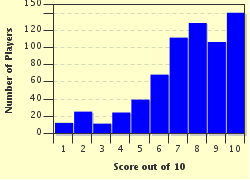Quiz Answer Key and Fun Facts
1. Prominent leaders, especially those of extreme ideals, often make fine studies in the meaning of alignment. For example, Adolf Hitler and Joseph Stalin were both believers in order and discipline, but had little if any regard for human life or happiness contrary to their plans. Which of these alignments would a character based on Hitler or Stalin most likely espouse?
2. On the other hand, fictional characters, with their inherent two dimensional aspects, are also great studies in alignment. Such is the case with Aragorn, the romantic, wandering ranger from Tolkien's "Lord of the Rings" cycle, who is often cited as a prime exemplar of what alignment?
3. Nuances in the portrayals of most fictional characters make it difficult to concretely classify them as one alignment. Like most real people, they act differently in different circumstances, and as such do not attend to the beck and call of a cosmic rulebook. One major exception is Superman, the first superhero of twentieth-century comic books. Though his character has developed over time, it would be pushing credulity to say he has ever really deviated from what alignment (at least since 1950 or so, when the character became relatively stable)?
4. In their Wizards of the Coast-published Dungeons and Dragons supplement, "The Complete Scoundrel", Mike McArtor and Wesley Schneider make an interesting case for scoundrels (i.e, characters that live by their wits, "sneaks, cheats, bluffers and opportunists") of an unlikely alignment. As examples, they cite James Bond, Odysseus, and Sanjuro, the title character from the Kurosawa film "Yojimbo". What counterintuitive (but logically defensible) alignment do McArtor and Schneider claim for these figures, bucking the common perception of this alignment as that of a souless martinet?
5. As cited earlier, it may be inappropriate to classify real people as one consistent alignment. Such would not be the case with Henry Lee Lucas, a purported serial killer. By some estimates, the nomadic Lucas killed over 100 people, but estimates of this sort are impossible to verify because of the murderer's penchant for pathological lying. His confessions eventually grew so contradictory that his was pardoned for one of his murders by none other than George W. Bush because it had been proven that Lucas was in another state when the killing he had confessed to occurred. Henry Lee Lucas is a prime example of what alignment?
6. As of this writing, the canonical resource on Dungeons and Dragons player alignment, "Players Handbook: Core Rulebook I v. 3.5" (published by Wizards of the Coast), defines one alignment as utterly individualistic - a character with this alignment is "out for herself, pure and simple". As such, it is generally discouraged, if not outright banned, from player character use. What name is given this notorious alignment?
7. "When someone needs help, I don't ask about their politics." This line, uttered by undiscriminating caregiver Nurse Meg Cratty on the television show "M*A*S*H", is most typical of what alignment, as defined by "Players Handbook 3.5"?
8. "The Simpsons" character Moe Szyslak briefly embraced the doctrine of postmodernism, which he defined as "weird for the sake of weird". Though many postmodern thinkers might dispute this formulation, what freewheeling Dungeons & Dragons alignment might most closely fulfill Moe's proclaimed ethos?
9. In Dungeons & Dragons terms, what alignment is my dog? (You really don't need to know anything about my dog to answer this question.)
10. Finally, in practical gameplay, one application of alignment is the strictures it places on the behavior of certain character classes. Which of these classes does NOT have any restrictions on alignment?
Source: Author
stuthehistoryguy
This quiz was reviewed by FunTrivia editor
gtho4 before going online.
Any errors found in FunTrivia content are routinely corrected through our feedback system.


